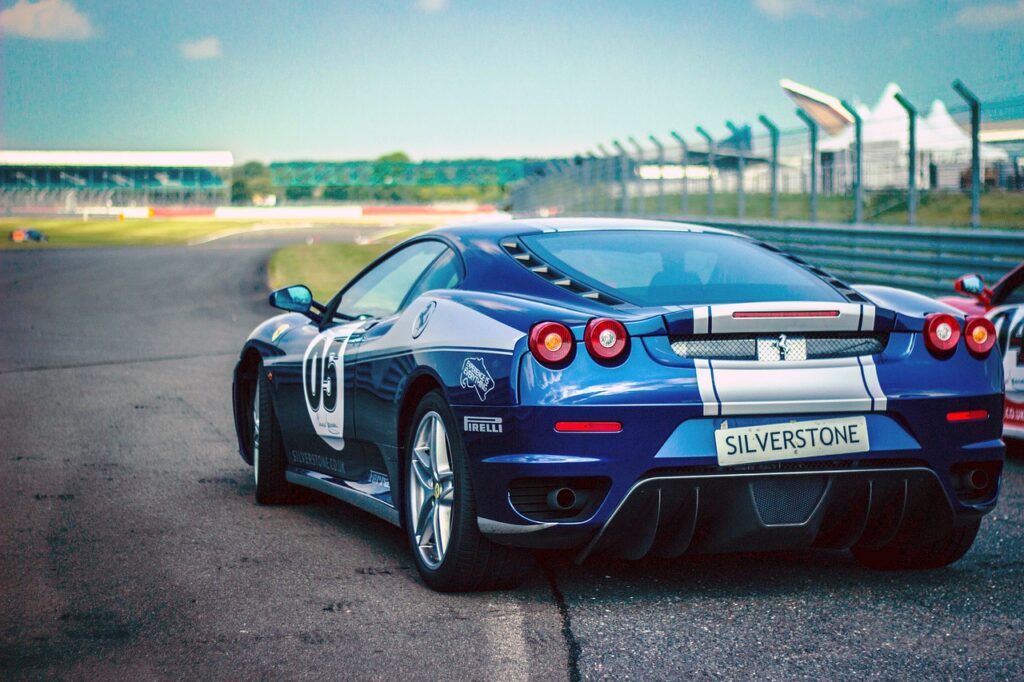
The automotive world is a fascinating place, constantly evolving with new technologies, designs, and, perhaps most importantly, new generations of drivers. Every era has its iconic vehicles, cars that capture the zeitgeist and become cherished symbols of their time. For the Baby Boomer generation, the roads of America were once dominated by powerful V8s, spacious luxury cruisers, and unmistakable muscle cars that roared with character and confidence. These machines weren’t just transportation; they were statements, reflections of a booming economy and a culture that valued size, comfort, and raw power.
Yet, as the wheel of time turns, so do preferences and priorities. What was once the pinnacle of automotive desire for Boomers often finds itself collecting dust in the digital garages of Millennial contemplation. The younger generation, shaped by different economic realities, technological advancements, and environmental consciousness, looks at these classic behemoths through a different lens. They’re not just seeing classic design; they’re seeing fuel inefficiency, dated tech, and often, a hefty maintenance bill. It’s a fascinating generational gap in what truly constitutes a “cool ride.”
So, why are some of these once-revered vehicles being politely but firmly passed over by those born between 1981 and 1996? We’re diving deep into the showroom of yesteryear to uncover the compelling reasons why these classic Boomer cars, despite their undeniable charm and historical significance, simply aren’t making it onto the Millennial wish list. Get ready to explore the specific models that have fallen out of favor and understand the shifting tides of automotive appreciation.
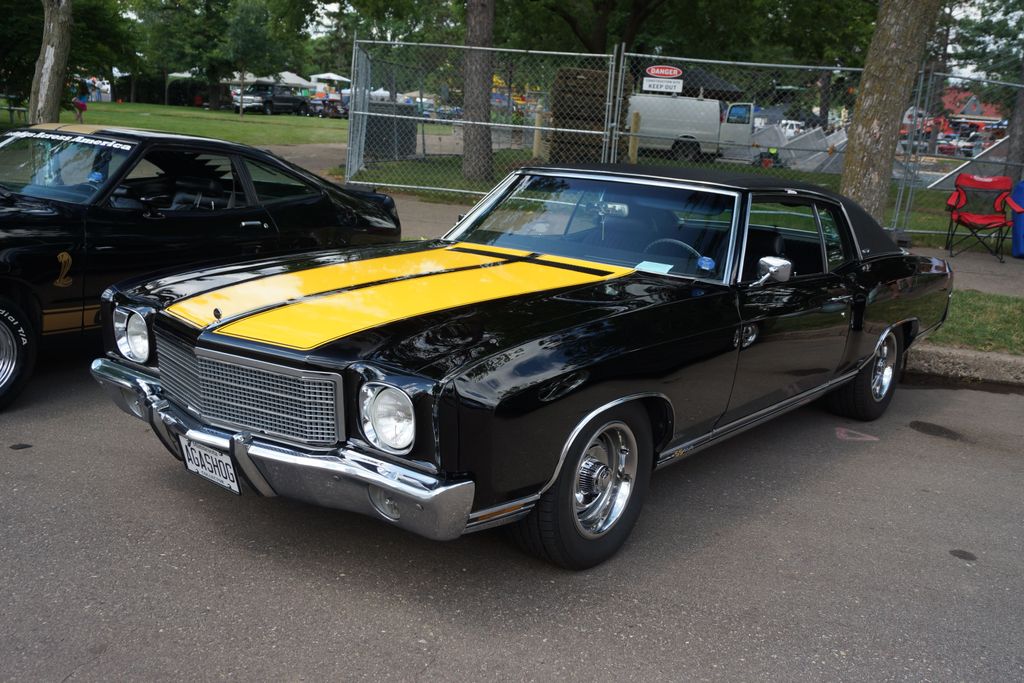
1. **Chevrolet Monte Carlo**Produced for an impressive stretch from 1970 to 2007, the Chevrolet Monte Carlo carved out its niche as a highly popular personal luxury car and a true muscle car, especially shining during the vibrant decades of the 1970s and 1980s. Its appeal was undeniable, offering a potent blend of performance and undeniable style, characterized by its distinctive design and that classic long hood. With a range of powerful V8 engines under the hood, it embodied a certain automotive aspiration for many.
However, when we fast forward to the Millennial perspective, the Monte Carlo often finds itself at a disadvantage. Younger drivers tend to pass over this classic, primarily due to its inherently large size. In an era where efficiency and maneuverability are prized, its substantial footprint can feel cumbersome. Furthermore, its legacy of powerful V8s translates into significant fuel inefficiency, a major red flag for a generation increasingly aware of both environmental impact and practical running costs.
Compounding these practical concerns is the perception that it’s an “old man’s car.” This unfortunate label, while perhaps unfair to its legacy, sticks in the minds of a generation looking for fresh, relevant statements in their vehicles. Despite its potential to appeal with its retro style, its undeniably spacious interior, and those powerful engine options, younger buyers are often drawn more toward modern, fuel-efficient vehicles that align better with their contemporary lifestyle demands and values.
While the Monte Carlo certainly holds a significant place in automotive history, even its prominence in NASCAR over the years doesn’t quite sway the younger generation. The allure of its classic lines and a roaring V8 engine simply can’t overcome the modern priorities of fuel economy and up-to-date technology for many Millennials.
Car Model Information: 2019 Ford F-150 Raptor
Name: Chevrolet Monte Carlo
Manufacturer: Chevrolet
Production: 1969–1987,1994–2007
ModelYears: 1970–1988,1995–2007
Class: Personal luxury car
BodyStyle: coupé
Layout: FR layout
Caption: 2006 Chevrolet Monte Carlo LS
Categories: 1980s cars, 1990s cars, 2000s cars, All Wikipedia articles written in American English, All articles needing additional references
Summary: The Chevrolet Monte Carlo is a two-door coupe that was manufactured and marketed by the Chevrolet division of General Motors. Deriving its name from the city in Monaco, the Monte Carlo was marketed as the first personal luxury car of the Chevrolet brand. Introduced for the 1970 model year, the model line was produced across six generations through the 2007 model year, with a hiatus from 1989 until 1994. The Monte Carlo was a variant of the Pontiac Grand Prix throughout its production.
From 1970 until 1972, the Monte Carlo rode on the unique “A-Special” platform with the Grand Prix, shifting to the standard A-body intermediate chassis from the 1973 through 1977 model years. For 1978, the Monte Carlo line underwent downsizing, but was still considered a midsized coupe. The rear-wheel drive A-body platform of this generation of Monte Carlo was redesignated as the G-body when GM’s front-wheel drive A-body cars were introduced for the 1982 model year. After an abbreviated 1988 model year, the Monte Carlo was replaced by the two-door Chevrolet Lumina.
For the 1995 model year, the Monte Carlo was revived, replacing the two-door Lumina. It shared the front-wheel drive W-platform with the two-door Grand Prix, and was the largest coupe in the Chevrolet lineup. After the 2002 model year, the Grand Prix coupe was discontinued, the Monte Carlo became the largest two-door model produced by an American auto manufacturer.
In response to declining sales of the model line, Chevrolet discontinued the Monte Carlo after the 2007 model year. During much of its production, the Monte Carlo represented the Chevrolet brand in stock car racing. During the 1980s, the Monte Carlo SS was introduced, featuring aerodynamically enhanced styling; as part of its revival, the Monte Carlo again represented Chevrolet in stock car racing from 1995 through its discontinuation.
Get more information about: Chevrolet Monte Carlo
Buying a high-performing used car >>>
Brand: Chevrolet Model: Monte Carlo
Price: $50,495 Mileage: 33,500 mi.
Read more about: Boomers Cherish These 15 Classic Cars, Yet Millennials Remain Unmoved: A Deep Dive into Generational Automotive Divides
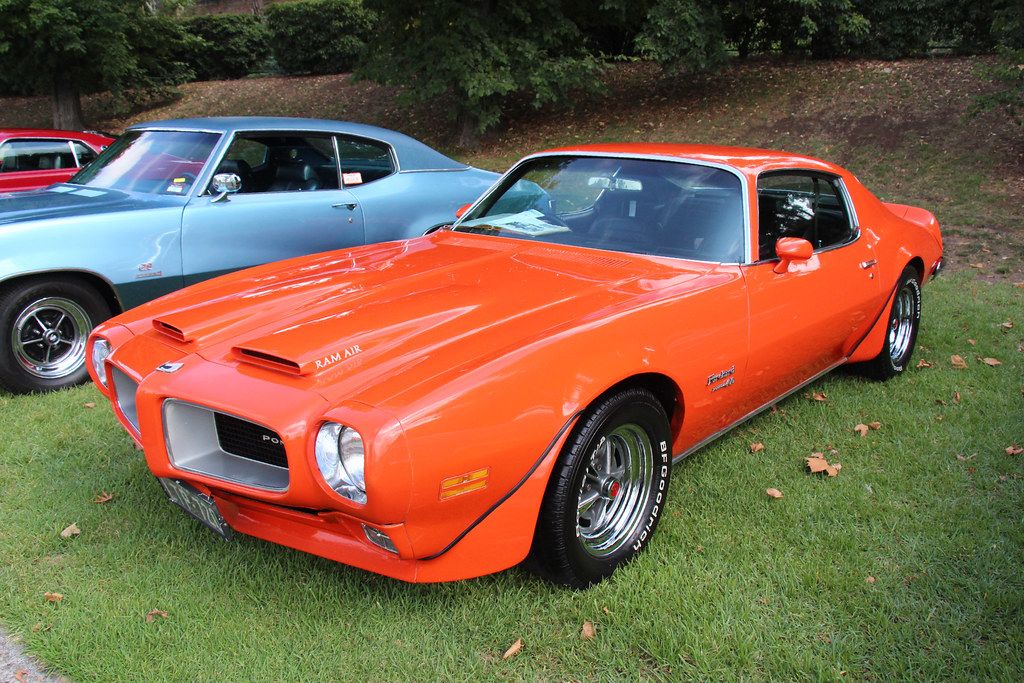
2. **Pontiac Firebird**Ah, the Pontiac Firebird. Produced from 1967 to 2002, this machine is nothing short of a muscle car icon, with its Trans Am variant achieving legendary status, notably popularized by the unforgettable “Smokey and the Bandit” movies. From inline-six engines to thunderous V8 powerhouses, the Firebird delivered exhilarating performance, all wrapped in striking design elements that famously included the bold “screaming chicken” hood decal, a symbol of its raw, untamed spirit.
Despite its fiery heritage and cultural impact, Millennials often find reasons to overlook the Firebird. One significant hurdle is its dated technology; the sophisticated infotainment systems and connectivity features common in today’s cars are simply absent. This isn’t just about creature comforts; it extends to safety features and overall driving dynamics that feel significantly older compared to contemporary options.
Furthermore, the reality of owning a classic muscle car like the Firebird often comes with higher maintenance costs. Parts can be harder to find, and specialized labor can be pricier, which doesn’t align with the budget-conscious nature of many younger buyers. The desire for a vehicle that offers reliability without breaking the bank is a strong motivator.
Ultimately, the Millennial preference leans heavily towards newer sports cars that boast not only better fuel efficiency – a recurrent theme in this discussion – but also a suite of modern amenities that make daily driving a more comfortable and connected experience. The raw, unrefined charm of the Firebird, while celebrated by Boomers, doesn’t always translate into the practicality and sophistication younger generations seek.
Car Model Information: 1983 Pontiac Firebird Trans Am 2D Coupe
Name: Pontiac Firebird
Caption: The second, third, and fourth generations of,the Pontiac Firebird Trans Am
Manufacturer: Pontiac (automobile)
Production: February 23, 1967 – August 30, 2002
ModelYears: 1967 – 2002
Class: Pony car,Muscle car
Platform: GM F platform
Related: Chevrolet Camaro
Layout: Front engine, rear-wheel-drive layout
Categories: 1970s cars, 1980s cars, 1990s cars, 2000s cars, All articles with dead external links
Summary: The Pontiac Firebird is an American automobile built and produced by Pontiac from the 1967 to 2002 model years. Designed as a pony car to compete with the Ford Mustang, it was introduced on February 23, 1967, five months after GM’s Chevrolet division’s platform-sharing Camaro. This also coincided with the release of the 1967 Mercury Cougar, Ford’s upscale, platform-sharing version of the Mustang.
The name “Firebird” was also previously used by GM for the General Motors Firebird series of concept cars in the 1950s.
Get more information about: Pontiac Firebird
Buying a high-performing used car >>>
Brand: Pontiac Model: Firebird
Price: $22,991 Mileage: 38,257 mi.
Read more about: Boomers Cherish These 15 Classic Cars, Yet Millennials Remain Unmoved: A Deep Dive into Generational Automotive Divides
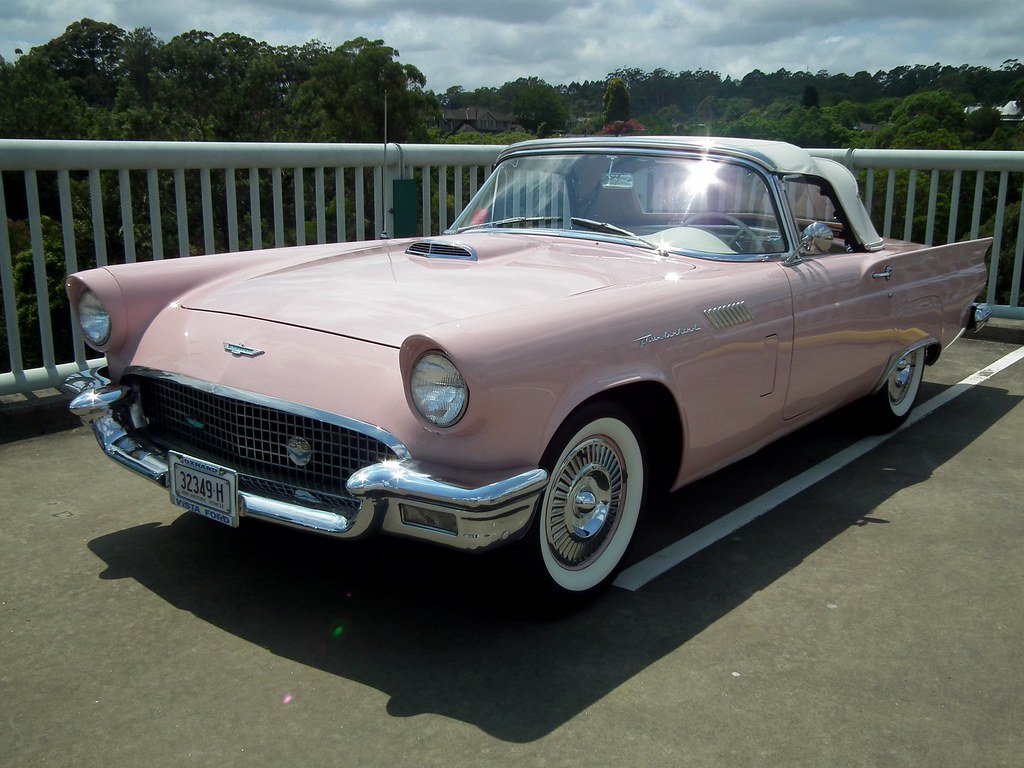
3. **Ford Thunderbird**The Ford Thunderbird holds a truly remarkable legacy, produced over a long run from 1955 to 2005. It underwent quite an evolution, starting life as a nimble two-seat sports car before transforming into a more opulent luxury cruiser. It’s the models from the 1950s and 1960s, with their signature V8 engines and sleek, stylish designs, that are particularly cherished and deeply ingrained in the hearts of Boomers, representing an era of effortless cool and automotive aspiration.
However, for Millennials, the Thunderbird often falls into the category of a car for older generations. This perception is a significant barrier, as younger buyers typically seek vehicles that reflect their own generational identity rather than that of their parents or grandparents. It’s not just about age; it’s about the perceived relevance of the design and the driving experience.
Beyond perception, practical considerations weigh heavily. The Thunderbird, particularly the older models, conspicuously lacks modern technology. The advanced safety features, driver-assistance systems, and seamless connectivity that are standard in most new cars are simply not present. This absence makes it less appealing to a tech-native generation accustomed to integrated digital experiences in every aspect of their lives.
Furthermore, fuel efficiency remains a critical factor. The classic Thunderbird’s powerful V8s were not designed with modern fuel economy standards in mind, making them costly to run in an era of fluctuating gas prices and environmental awareness. Despite its undeniably classic design and potent engines, these practical drawbacks, coupled with the lack of modern features, significantly diminish its appeal for younger buyers. Even the fifth generation, introduced as a personal luxury car, is often seen as lacking the sporty essence of its predecessors, further contributing to its diminished allure among Millennials.
Car Model Information: 2003 Ford Thunderbird Premium
Name: Ford Thunderbird
Caption: 1957 Thunderbird
Manufacturer: Ford Motor Company
Production: unbulleted list
ModelYears: unbulleted list
Class: unbulleted list
Layout: Front-engine, rear-wheel drive layout
Categories: 1960s cars, 1970s cars, 1980s cars, 1990s cars, 2000s cars
Summary: The Ford Thunderbird is a personal luxury car manufactured and marketed by Ford Motor Company for model years 1955 to 2005, with a hiatus from 1998 to 2001.
Ultimately gaining a broadly used colloquial nickname, the T-Bird, the model was introduced as a two-seat convertible, subsequently offered variously in a host of body styles including as a four-seat hardtop coupe, four-seat convertible, five-seat convertible and hardtop, four-door pillared hardtop sedan, six-passenger hardtop coupe, and five-passenger pillared coupe, before returning in its final generation, again as a two-seat convertible.
At its inception, Ford targeted the two-seat Thunderbird as an upscale model. The 1958 model year design introduced a rear seat and arguably marked the expansion of a market segment that came to be known as personal luxury cars, positioned to emphasize comfort and convenience over handling and high-speed performance.
Get more information about: Ford Thunderbird
Buying a high-performing used car >>>
Brand: Ford Model: Thunderbird
Price: $14,600 Mileage: 49,430 mi.
Read more about: Ten Iconic Jet Age Dream Machines: Unpacking the Designs, Power, and Legacy of Mid-Century Automotive Innovation
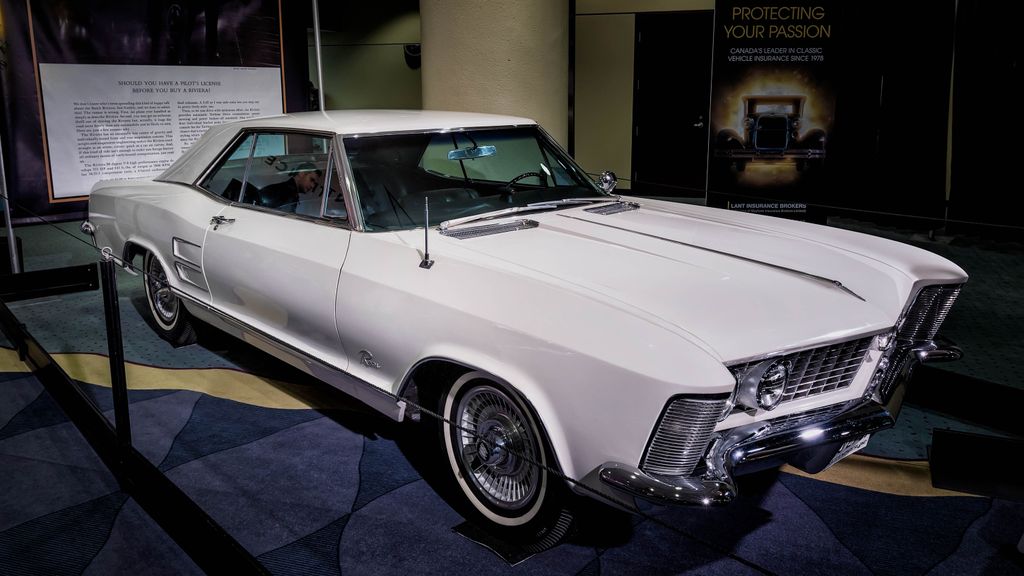
4. **Buick Riviera**The Buick Riviera, produced from 1963 to 1999, is a vehicle that truly stood out for its luxurious features and strikingly distinctive styling. The early 1970s models, particularly those iconic “boat-tail” designs, are still admired today for their daring aesthetics. Equipped with powerful V8 engines, the Riviera put a strong emphasis on comfort and smooth cruising, easily earning its place as a coveted status symbol of its time, a true reflection of American automotive grandeur.
Despite its undeniable elegance, Millennials often decide to pass on the Riviera, primarily due to its sheer physical presence. Its large size, a hallmark of luxury in its heyday, now translates into a challenge for parking and navigating increasingly dense urban environments. This substantial footprint is a practical deterrent for many younger drivers who prioritize agility and ease of use.
Fuel inefficiency is another significant factor that consistently pushes the Riviera off the Millennial radar. The powerful V8s, while delivering a comfortable ride, were notoriously thirsty, making running costs prohibitive for a generation keenly focused on economic practicality and a lighter carbon footprint. Furthermore, the car’s age means it often incurs higher maintenance costs, a financial commitment many younger buyers are hesitant to undertake for an older vehicle.
While the car’s classic design and luxurious features might hold a certain appeal for those with a specific interest in vintage aesthetics, the overarching practicality issues strongly deter many younger buyers. The “too bold” design, which once made it unique, is now sometimes viewed as an aesthetic misstep by a generation with different design sensibilities, further contributing to its rejection.
Car Model Information: 1971 Buick Riviera
Caption: 1963 Buick Riviera
Name: Buick Riviera
Predecessor: Buick Super
Manufacturer: Buick
ModelYears: 1963–1993,1995–1999
Class: Personal luxury car
Categories: 1960s cars, 1970s cars, 1980s cars, 1990s cars, All articles with specifically marked weasel-worded phrases
Summary: The Buick Riviera is a personal luxury car that was marketed by Buick from 1963 to 1999, with the exception of the 1994 model year.
As General Motors’ first entry into the personal luxury car market segment, the Riviera was highly praised by automotive journalists upon its high-profile debut. It was a ground-up design on a new GM E platform debuting for the 1963 model year and was also Buick’s first unique Riviera model.
Unlike its subsequent GM E platform stablemates, the Oldsmobile Toronado and Cadillac Eldorado, the Riviera was initially a front engine/rear-wheel drive platform, switching to front-wheel drive starting with the 1979 model year.
While the early models stayed close to their original form, eight subsequent generations varied substantially in size and styling. A total of 1,127,261 Rivieras were produced.
The Riviera name was resurrected for two concept cars that were displayed at auto shows in 2007 and in 2013.
Get more information about: Buick Riviera
Buying a high-performing used car >>>
Brand: Buick Model: Riviera
Price: $22,499 Mileage: 91,150 mi.
Read more about: Boomers Cherish These 15 Classic Cars, Yet Millennials Remain Unmoved: A Deep Dive into Generational Automotive Divides

5. **Cadillac Eldorado**The Cadillac Eldorado, with a production span from 1952 to 2002, was undeniably a quintessential symbol of American luxury and opulent excess. These magnificent machines boasted massive V8 engines and interiors so plush they practically invited you to sink in and stay a while. The Eldorado was a consistent favorite among affluent buyers, embodying a specific vision of success and comfort that resonated deeply with the Boomer generation.
However, for Millennials, the Eldorado frequently lands in the ‘overlooked’ category, largely due to its enormous size. In today’s world, where parking spaces seem to shrink and urban congestion grows, a vehicle of the Eldorado’s monumental proportions can feel more like a burden than a luxury. This physical scale simply doesn’t align with the practical demands of modern daily driving for many.
Adding to its practical drawbacks is its notoriously poor fuel economy. Those massive V8 engines, while powerful, were incredibly thirsty, leading to high running costs that clash sharply with the environmental consciousness and economic practicality that Millennials often prioritize. Furthermore, the sheer complexity and age of these vehicles often translate into significant and recurrent high maintenance costs, which is a major deterrent for younger buyers.
While its classic design, sumptuously luxurious interiors, and powerful engines hold a certain nostalgic charm, the practical drawbacks of the Eldorado ultimately make it less attractive to younger generations. Its opulence, once a celebrated feature, now often appears as an excessive display that conflicts with Millennial values of sustainability and efficiency, marking it as a relic of a bygone automotive era.
Car Model Information: 1984 Cadillac Eldorado
Caption: 1963 Cadillac Eldorado Convertible
Name: Cadillac Eldorado
Manufacturer: Cadillac
Production: 1952–2002
Layout: Front-engine, rear-wheel-drive layout
Aka: Cadillac Fleetwood Eldorado
Class: Personal luxury car
Successor: Cadillac CTS
Categories: 1960s cars, 1970s cars, 1980s cars, 1990s cars, 2000s cars
Summary: The Cadillac Eldorado is a luxury car manufactured and marketed by the Cadillac Motor Car Division of General Motors from 1952 until 2002, over twelve generations.
The Eldorado was at or near the top of the Cadillac product line. The original 1953 Eldorado convertible and the Eldorado Brougham models of 1957–1960 had distinct bodyshells and were the most expensive models offered by Cadillac during those years. The Eldorado was never less than second in price after the Cadillac Series 75 limousine until 1966. Beginning in 1967, the Eldorado retained its premium position in the Cadillac price structure, but was manufactured in high volumes on a unique, two-door personal luxury car platform.
The Eldorado carried the Fleetwood designation from 1965 through 1972, and was seen as a modern revival of the pre-war Cadillac V-12 and Cadillac V-16 roadsters and convertibles.
Get more information about: Cadillac Eldorado
Buying a high-performing used car >>>
Brand: Cadillac Model: Eldorado
Price: $13,990 Mileage: 50,720 mi.
Read more about: Boomers Cherish These 15 Classic Cars, Yet Millennials Remain Unmoved: A Deep Dive into Generational Automotive Divides
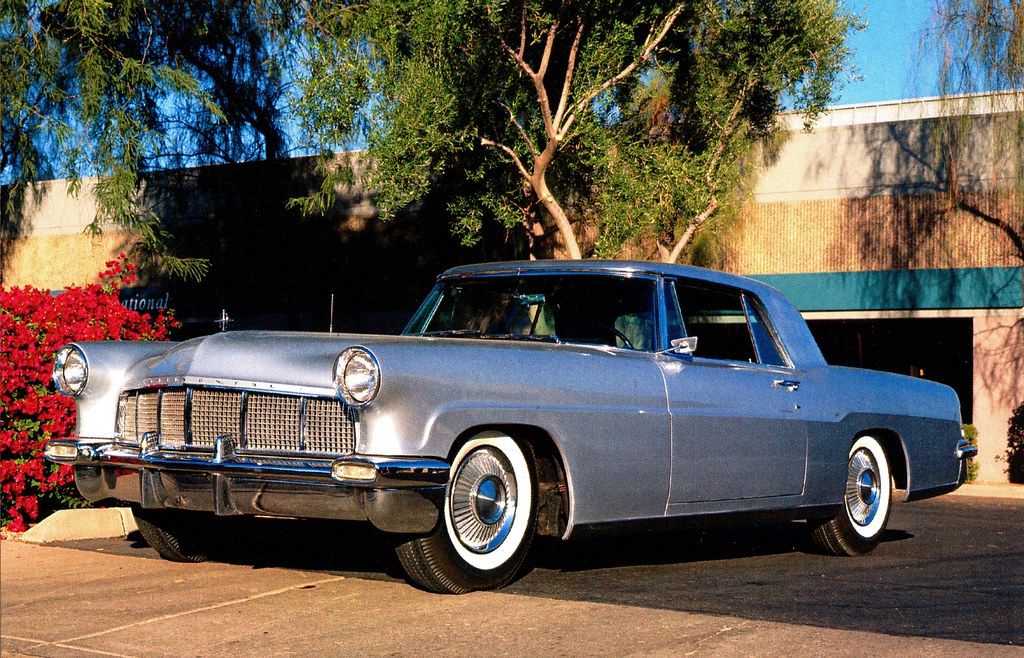
6. **Lincoln Continental Mark IV**Produced between 1972 and 1976, the Lincoln Continental Mark IV is a masterclass in distinctive design, instantly recognizable by its iconic opera windows and a long, sleek body that exuded sophistication. This wasn’t just a car; it was a statement. Powered by a commanding 460 cubic inch V8 engine, the Mark IV delivered a ride that was both remarkably smooth and undeniably powerful, a true embodiment of luxury cruising that appealed deeply to the Boomer generation’s appreciation for grand, comfortable vehicles.
Furthermore, the broader Lincoln Continental lineage, especially models featuring the revered “suicide doors,” holds a special place in the hearts of Boomers as a representation of ultimate luxury and prestige. This design element, in particular, symbolized an era of daring elegance and bespoke craftsmanship, making it a true icon of its time.
Despite this storied past, Millennials tend to pass over the Mark IV for several key reasons. Its immense size is a significant practical hurdle, making it cumbersome to maneuver and park in contemporary environments. This issue is compounded by its poor fuel economy; the powerful V8, while impressive, simply doesn’t align with modern sensibilities regarding efficiency and environmental impact.
The perception that it’s simply a “car for older generations” also plays a crucial role in its rejection. Younger buyers often find its large, impractical design less appealing, viewing it as inefficient and out of touch with today’s urban driving needs. Despite its luxurious interior and unique styling, the high maintenance costs and overall practicality issues severely deter many younger buyers, leaving this once-grand vehicle appreciated more in memory than in modern-day use.” , “_words_section1”: “1994
Car Model Information: 2021 Jeep Grand Cherokee Laredo X
Manufacturer: Lincoln Motor Company
Caption: 1975 Continental Mark IV
Name: Mark IV
Production: 1971–1976
ModelYears: 1972–1976
BodyStyle: coupe
Layout: Front-engine, rear-wheel-drive layout
Engine: 460 cuin
Abbr: on
Assembly: Wixom Assembly,Wixom, Michigan
Transmission: Ford C6 transmission
Predecessor: Lincoln Continental Mark III
Wheelbase: 120.4 in
Length: 228.1 in
Width: 79.8 in
Height: 53.5 in
Weight: convert
Successor: Lincoln Continental Mark V
Related: Ford Thunderbird (sixth generation)
Categories: 1970s cars, All Wikipedia articles needing clarification, Articles with short description, Cars discontinued in 1976, Cars introduced in 1972
Summary: The Continental Mark IV is a personal luxury car that was marketed by the Lincoln division of Ford Motor Company from the 1972 to 1976 model years. The third generation of the Mark series, the Mark IV grew in size over its Continental Mark III predecessor. As with the previous generation, the Mark IV saw little direct competition in the American marketplace, competing nearly exclusively against the Cadillac Eldorado (redesigned for 1971).
As with the Mark III, the Mark IV shared its chassis with the Ford Thunderbird, with the Mark IV receiving its own bodywork below the windows. Hidden headlights and a faux Rolls-Royce chrome grille were retained, and a Continental spare tire trunklid. For 1976, the Designer Series option package was introduced; in what would become a tradition for the Mark series (and later Lincoln), the option consisted of specially coordinated exterior and interior trims developed between Lincoln and contemporary fashion designers.
Ford assembled the Continental Mark IV at its Wixom Assembly Plant in Michigan) facility alongside the Ford Thunderbird and the Lincoln Continental. For 1977, the Mark IV underwent a substantial revision, becoming the Continental Mark V.
Get more information about: Lincoln Continental Mark IV
Buying a high-performing used car >>>
Brand: Lincoln Model: Continental Mark IV
Price: $27,316 Mileage: 34,523 mi.
Read more about: Boomers Cherish These 15 Classic Cars, Yet Millennials Remain Unmoved: A Deep Dive into Generational Automotive Divides
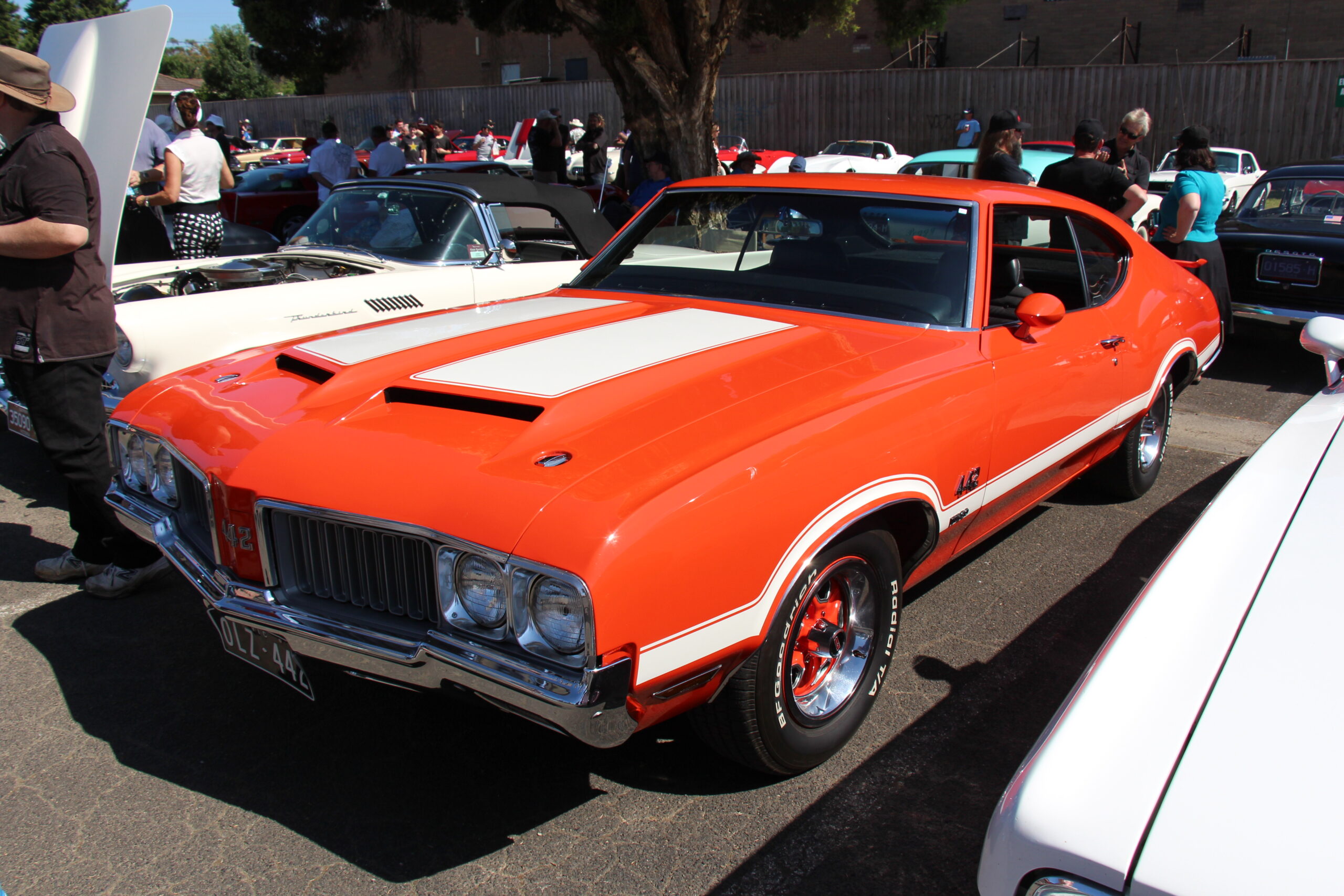
7. **Oldsmobile 442**The Oldsmobile 442, a true powerhouse produced from 1964 to 1987, roared its way into automotive history as a definitive classic muscle car. Its aggressive styling and potent V8 engines were legendary, with the iconic “442” designation proudly standing for a four-barrel carburetor, a four-speed manual transmission, and dual exhausts—a recipe for pure, unadulterated performance that thrilled a generation. It wasn’t just a car; it was a statement of power and speed.
Yet, despite its undeniable muscle car allure, the 442 frequently finds itself on the sidelines when Millennials browse for their next ride. One of the biggest roadblocks? Its infamous fuel inefficiency. Those powerful V8s, while exhilarating, were not built for an era of rising gas prices and growing environmental consciousness, making it a costly and less appealing choice for a budget-savvy generation.
High maintenance costs further complicate the picture. Keeping a classic muscle car like the 442 in top condition often requires specialized parts and labor, adding another layer of financial commitment that many younger buyers are reluctant to embrace. Millennials often gravitate towards modern performance cars that offer a blend of exhilarating speed, advanced technology, and far more manageable running costs, making the 442’s raw charm a tougher sell.
So, while the Oldsmobile 442 certainly boasts that classic muscle car appeal, powerful engines, and an iconic design that’s still respected today, these elements alone aren’t enough to overcome the practical drawbacks for many Millennials. They’re looking for performance that aligns with today’s realities, not just a nostalgic trip down a gas-guzzling memory lane.
Car Model Information: 1969 Oldsmobile 442
Name: Oldsmobile 442
Manufacturer: Oldsmobile
ModelYears: 1964–1980,1985–1987,1990–1991
Class: Muscle car
Layout: FR layout
Caption: 1971 Oldsmobile 442
Categories: 1960s cars, 1970s cars, 1980s cars, All articles with unsourced statements, Articles with short description
Summary: The Oldsmobile 4-4-2 is a muscle car produced by Oldsmobile between the 1964 and 1987 model years. Introduced as an option package for US-sold F-85 and Cutlass models, it became a model in its own right from 1968 to 1971, spawned the Hurst/Olds in 1968, then reverted to an option through the mid-1970s. The name was revived in the 1980s on the rear-wheel drive Cutlass Supreme and early 1990s as an option package for the new front-wheel drive Cutlass Calais.
The “4-4-2” name (pronounced “Four-four-two”) derives from the original car’s four-barrel carburetor, four-speed manual transmission, and dual exhausts. It was originally written “4-4-2” (with badging showing hyphens between the numerals), and remained hyphenated throughout Oldsmobile’s use of the designation. Beginning in 1965, the 4-4-2s standard transmission was a three-speed manual along with an optional two-speed automatic and four-speed manual, but were still badged as “4-4-2″s.
Because of this change, from 1965 on, according to Oldsmobile brochures and advertisements, the 4-4-2 designation referred to the 400 cubic inch engine, four-barrel carburetor, and dual exhausts. By 1968, badging was shortened to simply “442”, but Oldsmobile brochures and internal documents continued to use the “4-4-2” model designation.
Get more information about: Oldsmobile 442
Buying a high-performing used car >>>
Brand: Oldsmobile Model: 442
Price: $43,990 Mileage: 24,000 mi.
Read more about: Boomers Cherish These 15 Classic Cars, Yet Millennials Remain Unmoved: A Deep Dive into Generational Automotive Divides
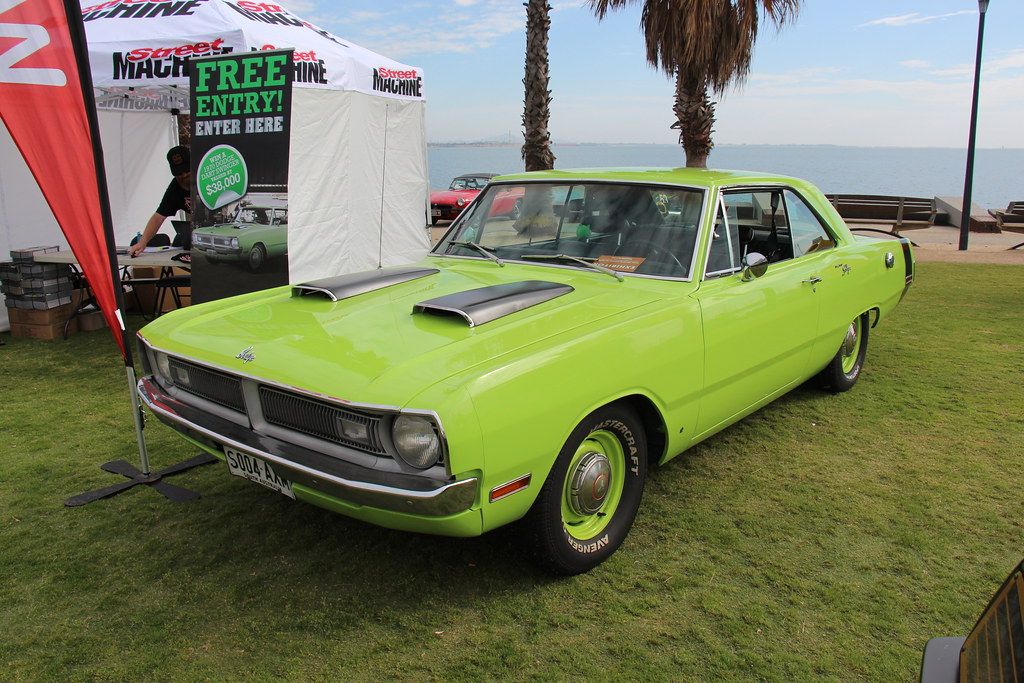
8. **Dodge Dart Swinger**From 1967 to 1976, the Dodge Dart Swinger emerged as a beloved compact muscle car, captivating drivers with its nimble handling and the thrill of its available V8 engine options. Its lightweight design combined with serious horsepower made it a genuinely fun and surprisingly affordable performance car in its prime. It was the kind of car that offered a taste of muscle without breaking the bank.
However, the Dart Swinger often gets a pass from the Millennial crowd, primarily due to its decidedly dated technology. In an age where even entry-level cars boast touchscreens, smartphone integration, and advanced driver-assistance systems, the Swinger’s spartan interior and analog experience feel miles behind. This isn’t just about creature comforts; it’s about an expectation of modern functionality.
Adding to its challenges is a perceived lower build quality compared to contemporary vehicles. While it was affordable, modern reliability standards mean that a vehicle from the 60s and 70s often requires more frequent attention and repairs. Millennials, valuing peace of mind and dependable daily drivers, often prefer newer, more reliable cars that don’t demand constant mechanical nurturing.
Despite its undeniable retro styling and the genuine performance capabilities that made it a legend, the lack of modern features and the potential for higher maintenance costs make the Dart Swinger a less attractive proposition for younger buyers. The appeal of a classic is strong, but not strong enough to outweigh the desire for convenience and long-term reliability.
Car Model Information: 2021 Jeep Grand Cherokee Laredo X
Name: Dodge Dart
Caption: 1966 Dodge Dart GT 2-door hardtop
Manufacturer: Dodge
Production: 1959–1976 (US market)
1969-1981 (Brazil)
AlternativeName: Charger (Brazil)
ModelYears: 1960–1976 (US market)
1970-1981 (Brazil)
Class: Full-size
Layout: FR layout
Predecessor: Dodge Coronet#Fourth generation (1957–1959)
Related: Plymouth Valiant,Chrysler Valiant,Dodge Phoenix
Successor: Dodge Aspen,Dodge Diplomat,Talbot Tagora
Categories: 1970s cars, All articles with unsourced statements, Articles with short description, Articles with unsourced statements from December 2023, Articles with unsourced statements from May 2025
Summary: The Dodge Dart is a line of passenger cars produced by Dodge from the 1959 to 1976 model years in North America, with production extended to later years in various other markets.
The production Dodge Dart was introduced as a lower-priced full-size model in 1960 and 1961, but became a mid-size car for one model year for 1962, and was then reduced to a compact for two generations, from 1963 to 1976.
Chrysler had first used ‘Dart’ name plates on two Italian styled show cars, in 1956 and 1957, before it became a Dodge model name. The Dart nameplate was resurrected for a Fiat-derived compact car that was introduced in 2012.
Get more information about: Dodge Dart
Buying a high-performing used car >>>
Brand: Dodge Model: Dart Swinger
Price: $27,316 Mileage: 34,523 mi.
Read more about: Buyer’s Remorse Hits Hard: 15 Cars Drivers Regretted Purchasing According to Latest Survey Findings
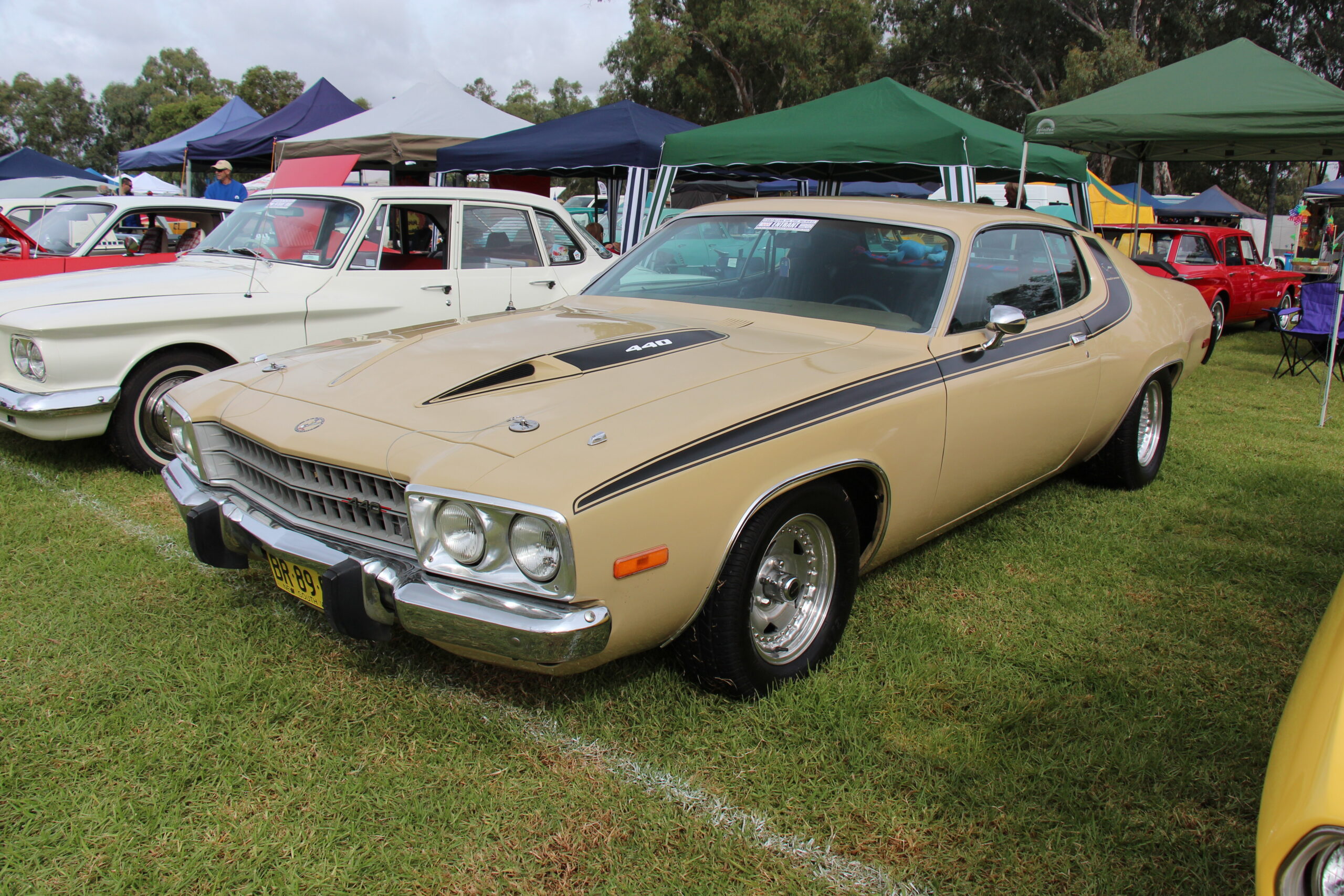
9. **Plymouth Road Runner**Enter the Plymouth Road Runner, a quintessential classic muscle car produced from 1968 to 1980, celebrated for its pure, unadulterated performance and no-frills philosophy. This wasn’t a car for subtlety; it was built for speed, boasting powerful V8 engines that made it an instant favorite among serious performance enthusiasts. Its very name, inspired by the cartoon character, promised quick and spirited escapes.
Yet, this iconic speed demon often gets overlooked by Millennials, a generation that prioritizes a different kind of automotive prowess. The Road Runner’s legendary powerful V8s inevitably translate to significant fuel inefficiency, a major deterrent in an era where eco-consciousness and economical driving are paramount. For many, the thrill of raw horsepower can’t overcome the pain at the pump.
Furthermore, owning a performance-focused classic like the Road Runner often means grappling with higher maintenance costs. Finding original parts can be a scavenger hunt, and specialized repairs can quickly become expensive. This starkly contrasts with the Millennial preference for modern, fuel-efficient sports cars that often come with warranties, advanced diagnostics, and more accessible parts.
While its raw, unrefined performance and classic design certainly hold a nostalgic charm, the practical drawbacks of the Road Runner severely limit its appeal to younger generations. Much like its contemporary, the Barracuda, the Road Runner is increasingly becoming a cultural icon “more appreciated in memory than in modern-day use,” a testament to shifting automotive values.
Car Model Information: 2021 Jeep Grand Cherokee Laredo X
Name: Plymouth Road Runner
Assembly: Detroit,Michigan
Manufacturer: Plymouth (automobile)
Class: Mid-size car
Production: 1968–1980
Related: unbulleted list
Layout: FR layout
Categories: 1970s cars, 1980s cars, All articles needing additional references, All articles with peacock terms, All articles with unsourced statements
Summary: The Plymouth Road Runner is a muscle car introduced by Chrysler in the United States for the 1968 model year and marketed under its Plymouth brand. Initially based on the Belvedere, the brand’s basic mid-size model, the Road Runner combined a powerful engine with a spartan trim level and a price that undercut increasingly upscale and expensive muscle cars such as the Pontiac GTO and Plymouth’s own GTX. It was initially a sales success.
The Road Runner was built in three generations on the mid-size B platform. Like most muscle cars, its performance and sales declined in the 1970s due to an increasing focus on fuel economy and the adoption of more stringent U.S. emission standards. The nameplate became to a trim package for the compact Plymouth Volaré for model year 1976—no longer offering any special performance capability—and was discontinued in 1980.
Get more information about: Plymouth Road Runner
Buying a high-performing used car >>>
Brand: Plymouth Model: Road Runner
Price: $27,316 Mileage: 34,523 mi.
Read more about: The Costly Truth: 14 Classic Cars That Are Simply Not Worth Restoring for the Savvy Enthusiast

10. **Mercury Cougar**From its debut in 1967 all the way to 2002, the Mercury Cougar carved out a unique identity as the more sophisticated, upscale counterpart to the Ford Mustang. It wasn’t merely a brute force machine; it offered a compelling blend of performance and comfort, boasting a range of robust V8 engines and interiors that exuded a touch of luxury. It was designed for drivers who wanted both speed and a refined experience.
However, for a significant portion of Millennials, the Cougar often misses the mark, primarily due to its substantial size. While its proportions once signified grandeur, today’s urban landscapes and tighter parking spaces make such a large vehicle feel cumbersome and impractical. This, coupled with its inherent fuel inefficiency, means it struggles to align with contemporary lifestyle demands.
The perception that it’s fundamentally “an older generation’s car” also acts as a powerful deterrent. Younger buyers are typically searching for vehicles that reflect their own identity and a modern aesthetic, rather than one associated with their parents’ or grandparents’ era. This generational disconnect influences buying decisions far more than one might expect.
Despite its stylish design and capable engines, the Mercury Cougar ultimately falls short for Millennials due to its lack of modern features and the burden of higher maintenance costs. They often dismiss it, seeing it as an “unnecessary deviation from the Mustang’s more classic appeal,” preferring the iconic simplicity and direct performance lineage of its sibling.
Car Model Information: 1995 Mercury Cougar XR7
Name: Mercury Cougar
Caption: 1969 Mercury Cougar (first generation)
Manufacturer: Mercury (automobile)
Layout: Front-engine, rear-wheel-drive layout
ModelYears: 1967–1997,1999–2002
Class: Pony car,Personal luxury car,Mid-size car,Sport compact
Categories: 1960s cars, 1970s cars, 1980s cars, 1990s cars, 2000s cars
Summary: The Mercury Cougar is a series of automobiles that was sold by Mercury from 1967 to 2002. The model line is a diverse series of vehicles; though the Cougar nameplate is most commonly associated with two-door coupes, at various stages in its production, the model also was offered as a convertible and a hatchback. During its production as the mid-size Mercury line, the Cougar was also offered as a four-door sedan and five-door station wagon.
In production for 34 years across eight generations (skipping the 1998 model year), the Cougar is second only to the Grand Marquis (36 years) in the Mercury line for production longevity. 2,972,784 examples were produced, making it the highest-selling Mercury vehicle. During the 1970s and 1980s, the marketing of the Mercury division was closely associated with the Cougar, with promotional materials advertising Mercury dealers as “The Sign of the Cat” with big cats atop Lincoln-Mercury dealer signs. Cat-related nameplates were adopted by other Mercury lines, including the Bobcat and Lynx.
During its production, the Cougar was assembled at the Dearborn Assembly Plant (part of the Ford River Rouge Complex) in Dearborn, Michigan from 1967 until 1973, San Jose Assembly (Milpitas, California) from 1968 into early 1969, Lorain Assembly (Lorain, Ohio) from 1974 until 1997, and at Flat Rock Assembly (Flat Rock, Michigan) from 1999 through 2002.
Get more information about: Mercury Cougar
Buying a high-performing used car >>>
Brand: Mercury Model: Cougar
Price: $10,995 Mileage: 37,589 mi.
Read more about: Boomers Cherish These 15 Classic Cars, Yet Millennials Remain Unmoved: A Deep Dive into Generational Automotive Divides
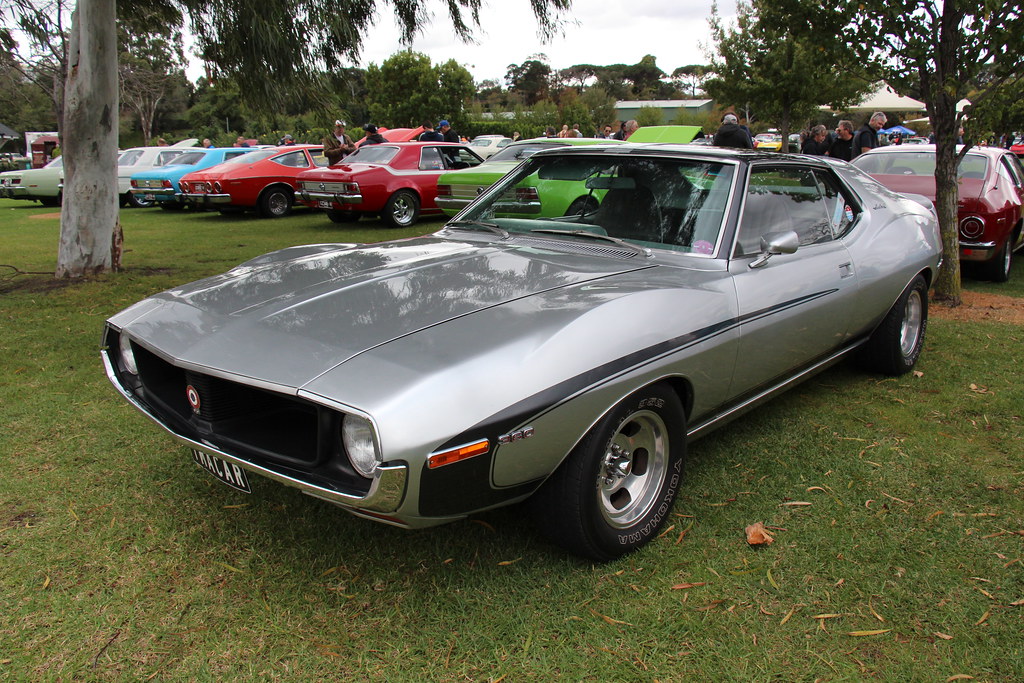
11. **AMC Javelin**The AMC Javelin, produced between 1968 and 1974, was a bold entry into the muscle car arena, instantly recognizable for its distinctive styling and delivering genuinely exciting performance. Equipped with a variety of powerful V8 engines, including the formidable 401 cubic inch option, the Javelin stood out from the crowd, carving its own niche among American performance cars.
Yet, this unique muscle car often struggles to capture the attention of Millennials, largely because of its notorious fuel inefficiency. Those potent V8s were designed in a different era, one less concerned with gas mileage, making the Javelin an expensive daily driver in today’s economy. Practicality, for this generation, often trumps raw power.
Adding to the challenge are the typically higher maintenance costs associated with a classic vehicle from a less common manufacturer like AMC. Sourcing parts and finding mechanics familiar with these cars can be difficult and costly. Millennials, preferring a seamless and less financially demanding ownership experience, often gravitate towards vehicles with more readily available support.
While the Javelin’s unique design and undeniable muscle car heritage might ignite a spark of interest in some younger enthusiasts, these qualities alone aren’t enough to overcome the practical drawbacks. The balance between vintage charm and modern-day usability heavily tips against it for many contemporary buyers.
Read more about: Pure Automotive Gold: 14 Masterpiece Cars from the 1960s That Still Reign Supreme
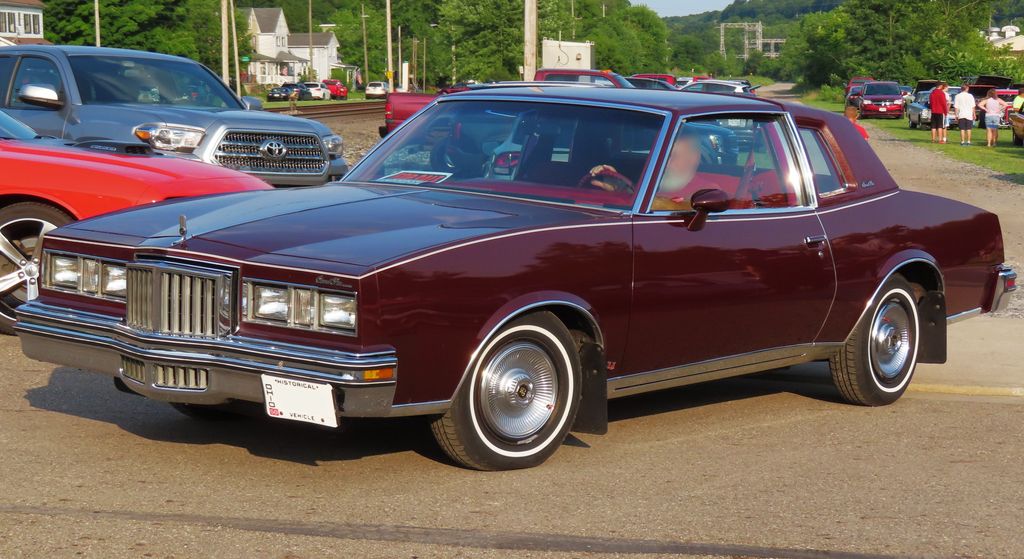
12. **Pontiac Grand Prix**The Pontiac Grand Prix, a vehicle with a long and storied production run from 1962 to 2008, gracefully evolved from a personal luxury car into a popular mid-size sedan. Throughout its various iterations, it consistently offered a blend of powerful V8 engines, stylish designs, and a comfortable driving experience, making it a beloved choice for decades.
However, the Grand Prix, particularly its classic iterations, often gets passed over by Millennials for some familiar reasons. Its typically large size, once a hallmark of luxury, now presents practical challenges for parking and maneuvering in crowded urban environments. This shift in urban living preferences significantly impacts a car’s perceived desirability.
Furthermore, the fuel inefficiency inherent in its powerful V8 engines is a major strike against it. For a generation that often values both economic prudence and environmental impact, a car that demands frequent trips to the gas station is simply not a practical choice. The comfort and style of yesteryear don’t always outweigh modern fuel concerns.
Despite its stylish design and the powerful engines that once made it a standout, the lack of modern features and the burden of higher maintenance costs make the classic Grand Prix less attractive to younger generations. It’s often seen as “an older generation’s car,” struggling to resonate with a demographic that prefers a more contemporary and connected driving experience.
**The Evolving Road Ahead: A Generational Shift in Automotive Desire**
As we’ve journeyed through these classic Boomer-era cars, a clear pattern emerges: the automotive landscape is constantly being reshaped by generational shifts in values and priorities. While these vehicles undoubtedly hold a significant place in history, embodying the power, luxury, and design sensibilities of a bygone era, their appeal to Millennials is consistently diminished by a confluence of practical drawbacks. Fuel inefficiency, dated technology, cumbersome size, and the specter of high maintenance costs are recurring themes, effectively steering younger buyers toward more contemporary alternatives.
It’s not that Millennials are entirely disinterested in classic cars; far from it. Recent surveys actually suggest that younger generations, including Gen Z, show a strong inclination towards classic vehicles. However, their appreciation often leans towards “modern classics” or “young timers”—cars from the 1990s and early 2000s that offer a blend of nostalgic appeal with more contemporary drivability and technology. This nuanced interest highlights a desire for vehicles that can offer character without sacrificing the conveniences and efficiencies of modern life.
Car Model Information: 2021 Jeep Grand Cherokee Laredo X
Name: Pontiac Grand Prix
Caption: 2004–2008 Pontiac Grand Prix
Manufacturer: Pontiac (automobile)
ModelYears: 1962–2008
Class: Personal luxury car
Layout: Front-engine, rear-wheel-drive layout
Successor: Pontiac G8
Platform: unbulleted list
Categories: 1960s cars, 1970s cars, 1980s cars, 1990s cars, 2000s cars
Summary: The Grand Prix is a line of automobiles produced by the Pontiac Division of General Motors from 1962 until 2002 as coupes and from 1989 through 2008 model years as four-door sedans.
First introduced as a full-size performance coupe for the 1962 model year, the model repeatedly varied in size, luxury, and performance over successive generations. The Grand Prix was the most expensive coupe Pontiac offered until the 1970s, when the Bonneville Brougham and the Firebird Trans Am became more exclusive; the Grand Prix moved into the intermediate personal luxury car and later the mid-size market segments.
All Grand Prixs from 1962 through 1972 were pillarless hardtops (except for the 1967 convertible).
Get more information about: Pontiac Grand Prix
Buying a high-performing used car >>>
Brand: Pontiac Model: Grand Prix
Price: $27,316 Mileage: 34,523 mi.
Read more about: Boomers Cherish These 15 Classic Cars, Yet Millennials Remain Unmoved: A Deep Dive into Generational Automotive Divides
The rejection of these particular Boomer icons isn’t a dismissal of automotive heritage, but rather a redefinition of what constitutes a “cool ride” for a new generation. It’s about seeking efficiency over sheer bulk, integrated tech over analog simplicity, and a driving experience that aligns with current economic and environmental realities. As the wheels of culture continue to turn, so too will our collective idea of what makes a car truly iconic for generations to come. The road ahead promises an exciting blend of past and present, but only those classics that can adapt to, or at least coexist with, modern sensibilities will truly endure.


